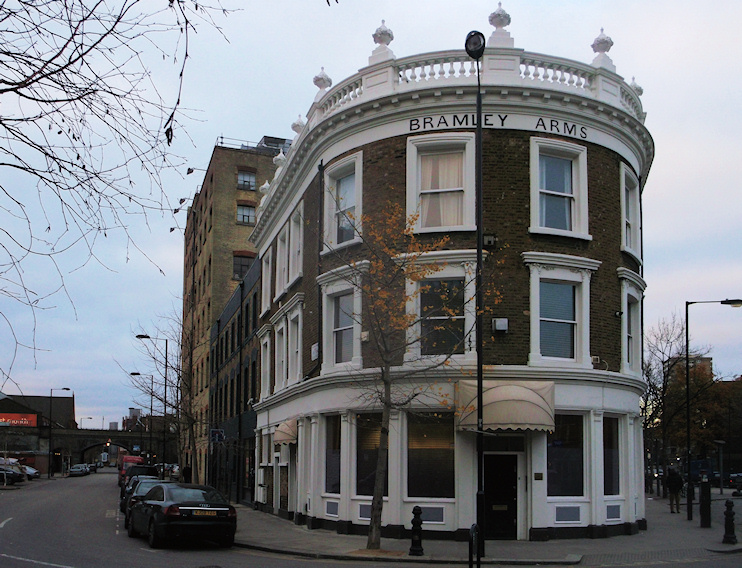Latimer Road
Latimer Road, Kensington & Chelsea/Hammersmith & Fulham
A London Underground station and historically poor street situated on the western side of Notting Dale

Latimer Road’s name originates from land endowed by Edward Latymer for the funding of Hammersmith’s Latymer school in the early 17th century.
The Metropolitan Railway line to Hammersmith was built through the district in 1864 and a station opened four years later on Bramley Road, at the junction with a branch line running south to Addison Road. By this time cottage laundries and pigsties were replacing former brickfields and the station was nicknamed ‘Piggery Junction’.
Latimer Road’s poverty drew municipal and philanthropic assistance. In 1880 the school board for London built the three-storey Latimer Road school, which now houses Ormiston Latimer Academy, an alternative provision school that provides education for vulnerable and challenging young people. Harrow school established a mission on the street in 1884 and a school in 1887.
However, deprivation continued well beyond the Victorian era, as Horace Newte observed in 1915: “Between Notting Hill and Wormwood Scrubs lies a vast desert of human dwellings … by scarcely perceptible degrees, there is a declension of so-called respectability, till at last the frankly working-class district of Latimer Road is reached.”†
The relationship between the street and the station was broken off by the construction in the 1960s of the Westway and the West Cross Route to Shepherd’s Bush, when Latimer Road’s southernmost section was renamed Freston Road.
The Greater London Council planned to demolish much of Freston Road and replace it with industry and high-density flats but squatters occupied the houses and declared the Republic of Frestonia in 1977. The GLC backed down and granted the squatters temporary leave to stay, while the Bramley Housing Co-operative planned and built on a human scale. The first new homes were completed in 1985.
In recent years pockets of the Latimer Road area have gone upmarket, notably at the Phoenix Brewery on Bramley Road and ‘Notting Dale Village’ on the newly-created Nicholas Road. However, most of the locality’s residents still live in subsidised housing and there are relatively few leisure amenities – other than the huge Westway sports centre – and little choice of places to shop or eat. Of course, on the other side of the West Cross Route it’s another world.
In a classic chase scene in The Lavender Hill Mob (1951), all the police cars converge in a pile-up at the junction of Bramley Road and Freston (then Latimer) Road in front of the Bramley Arms. Shown in the photograph above,* the pub also featured in the films Sid and Nancy, Betrayal, Leo the Last and Quadrophenia.
